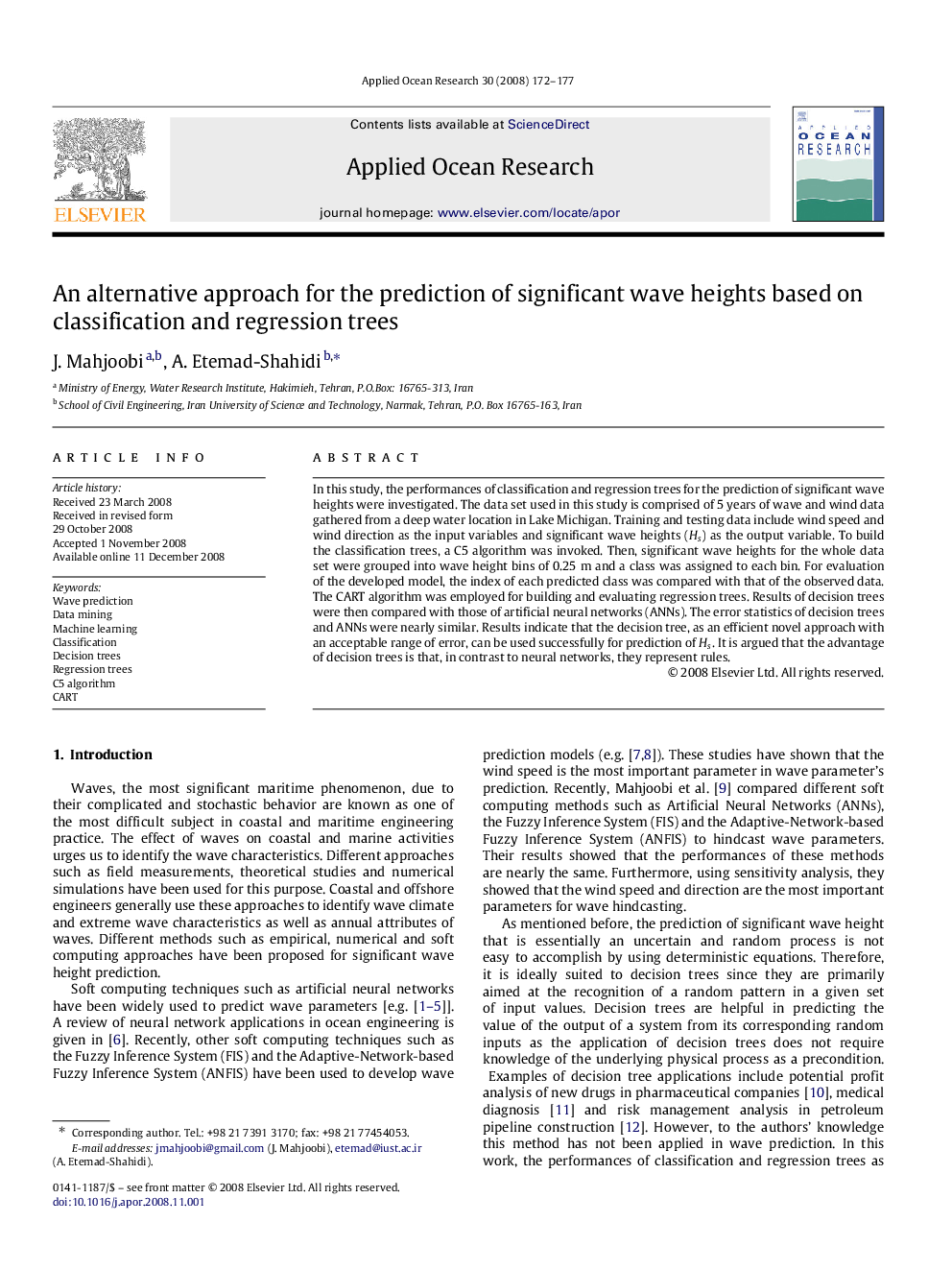| Article ID | Journal | Published Year | Pages | File Type |
|---|---|---|---|---|
| 1720397 | Applied Ocean Research | 2008 | 6 Pages |
In this study, the performances of classification and regression trees for the prediction of significant wave heights were investigated. The data set used in this study is comprised of 5 years of wave and wind data gathered from a deep water location in Lake Michigan. Training and testing data include wind speed and wind direction as the input variables and significant wave heights (HsHs) as the output variable. To build the classification trees, a C5 algorithm was invoked. Then, significant wave heights for the whole data set were grouped into wave height bins of 0.25 m and a class was assigned to each bin. For evaluation of the developed model, the index of each predicted class was compared with that of the observed data. The CART algorithm was employed for building and evaluating regression trees. Results of decision trees were then compared with those of artificial neural networks (ANNs). The error statistics of decision trees and ANNs were nearly similar. Results indicate that the decision tree, as an efficient novel approach with an acceptable range of error, can be used successfully for prediction of HsHs. It is argued that the advantage of decision trees is that, in contrast to neural networks, they represent rules.
